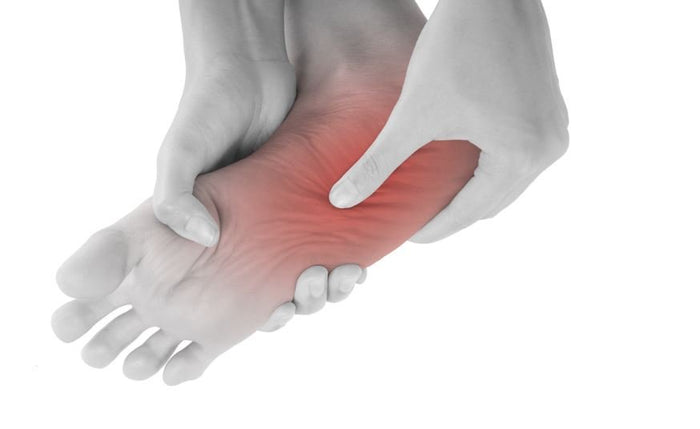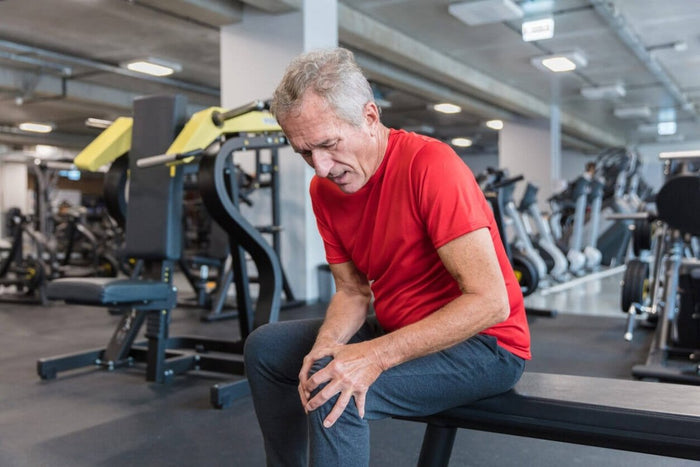Solutions For Arch Pain Relief: Your Comprehensive Guide To Easing Foot Discomfort

Arch pain can be excruciating, affecting your daily life and mobility. Whether you're an athlete, a busy professional, or someone who enjoys a leisurely stroll, arch pain can be a hindrance. In this blog, we'll explore arch pain causes, symptoms, and, most importantly, effective solutions for arch pain relief. Whether you're seeking immediate relief or long-term strategies, this comprehensive guide will help you step back into comfort and freedom.
Section 1: Understanding Arch Pain - Before diving into solutions, it's crucial to understand what causes arch pain. Arch pain typically results from various factors, including:
- Plantar Fasciitis: This common condition occurs when the plantar fascia, a band of tissue connecting the heel bone to the toes, becomes inflamed or strained (WebMD).
- Flat Feet: Flat arches can lead to arch pain as they lack the necessary support for the foot's natural structure.
- Overuse: Overexertion, excessive standing, or prolonged physical activity can strain the arches.
- Improper Footwear: Ill-fitting shoes or shoes without adequate arch support can exacerbate arch pain (Healthline).
- Injuries: Accidents or sports-related injuries can damage the arch, causing pain and discomfort.
Section 2: Immediate Relief Strategies - If you're currently experiencing arch pain, you'll want quick relief. Here are some immediate solutions to consider:
- RICE Method: Rest, Ice, Compression, and Elevation can help reduce inflammation and alleviate pain (Kaiser Permanente).
- Foot Massage: Gently massaging the arch can promote blood flow and relax tense muscles.
- Over-the-Counter Pain Medications: Non-prescription pain relievers like ibuprofen or naproxen can provide temporary relief.
- Arch Support Inserts: Gel or foam arch support inserts can provide instant cushioning and support.
Section 3: Long-Term Solutions - For lasting relief and prevention of arch pain, consider these long-term solutions:
- Custom Orthotics: Consult with a podiatrist to get custom-made orthotics that cater to your specific arch shape and foot mechanics.
- Proper Footwear: Invest in shoes with excellent arch support and cushioning. Replace worn-out shoes regularly.
- Stretching Exercises: Regular stretching of the calf muscles, Achilles tendon, and plantar fascia can help prevent arch pain (Medical News Today).
- Strengthening Exercises: Build foot and ankle strength through exercises like toe curls and resistance band workouts.
- Physical Therapy: A physical therapist can create a tailored plan to address arch pain and improve overall foot health.
Section 4: Lifestyle Adjustments - Small lifestyle changes can make a significant difference in preventing and managing arch pain:
- Maintain a Healthy Weight: Excess weight puts extra strain on your feet, increasing the risk of arch pain.
- Stay Hydrated: Proper hydration promotes muscle and tissue health, reducing the likelihood of cramps or stiffness.
- Wear Supportive Shoes at Home: Don't neglect your feet indoors; opt for supportive slippers or shoes.
- Regular Check-ups: Schedule periodic foot check-ups to catch potential issues early.
Section 5: When to Seek Professional Help - While many cases of arch pain can be managed with the strategies mentioned above, it's essential to consult a healthcare professional if:
- Pain Persists: If your arch pain doesn't improve after several weeks of self-care.
- Severe Discomfort: If the pain is severe, disabling, or limits your mobility significantly.
- Signs of Infection: If you notice signs of infection like redness, swelling, or discharge from the affected area.
Arch pain can be debilitating, but with the right strategies, you can find relief and regain your mobility. Whether you're looking for immediate comfort or long-term prevention, the solutions discussed in this blog offer a holistic approach to managing arch pain. Remember, it's essential to understand the causes and consult with healthcare professionals for a personalized treatment plan. By prioritizing foot health and making necessary lifestyle adjustments, you can step confidently into a pain-free future.
Consider Wearing SelectFlex Adjustable Orthotics to Help Relieve your Arch Pain.
Follow Us













